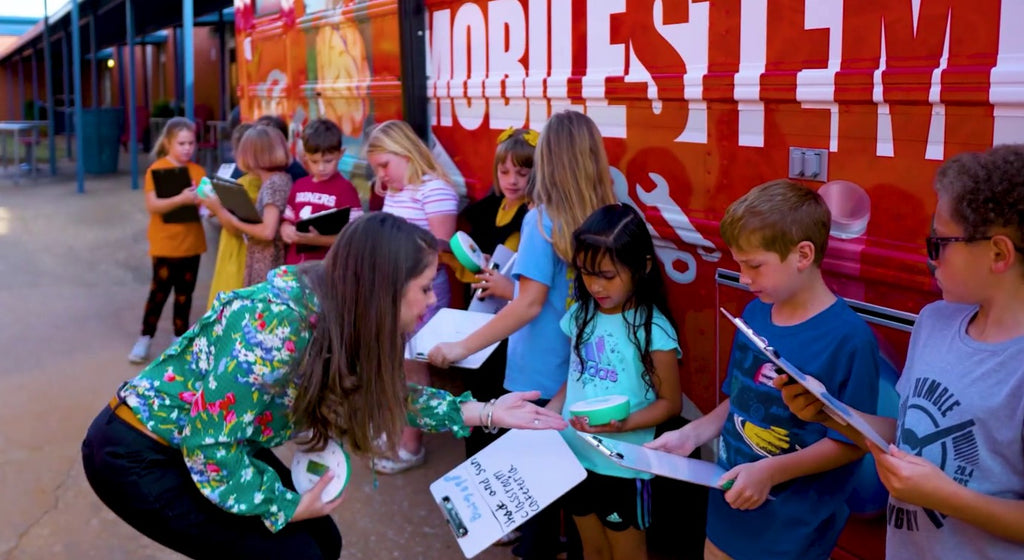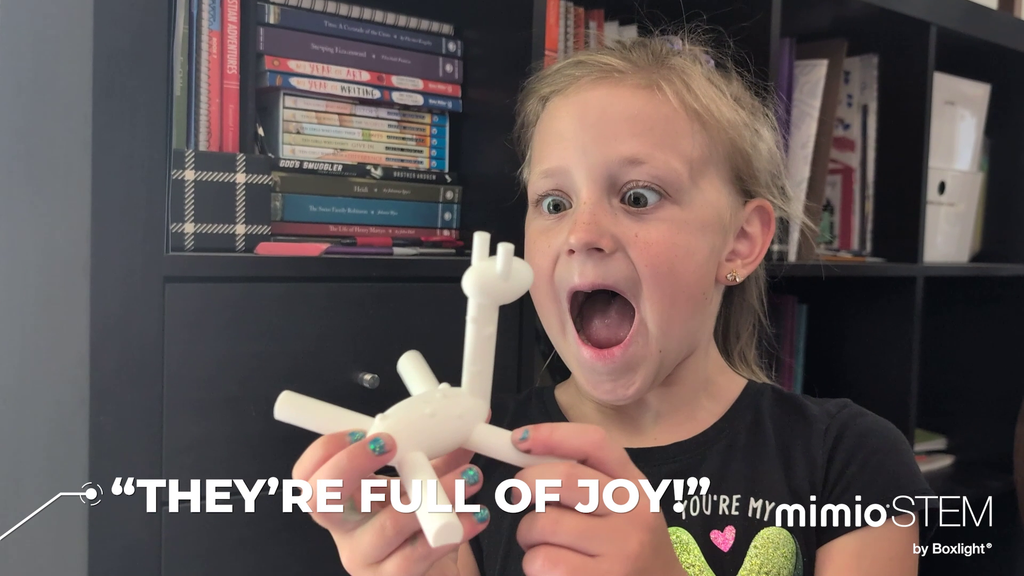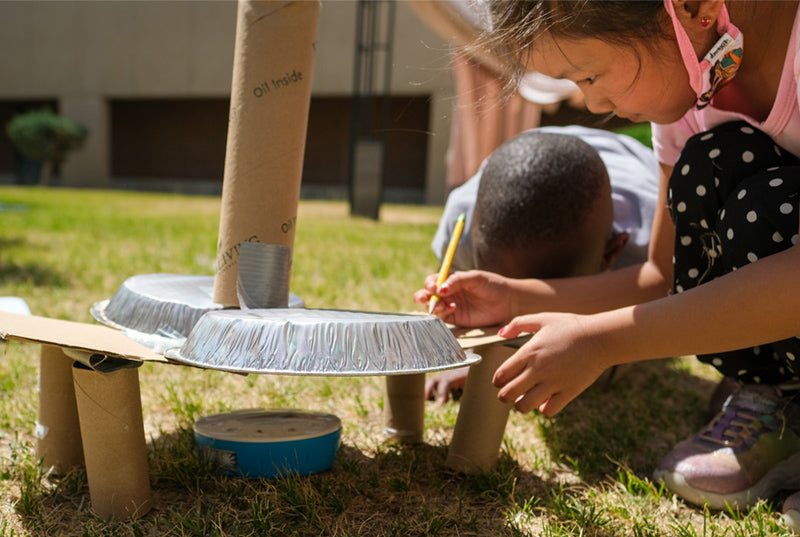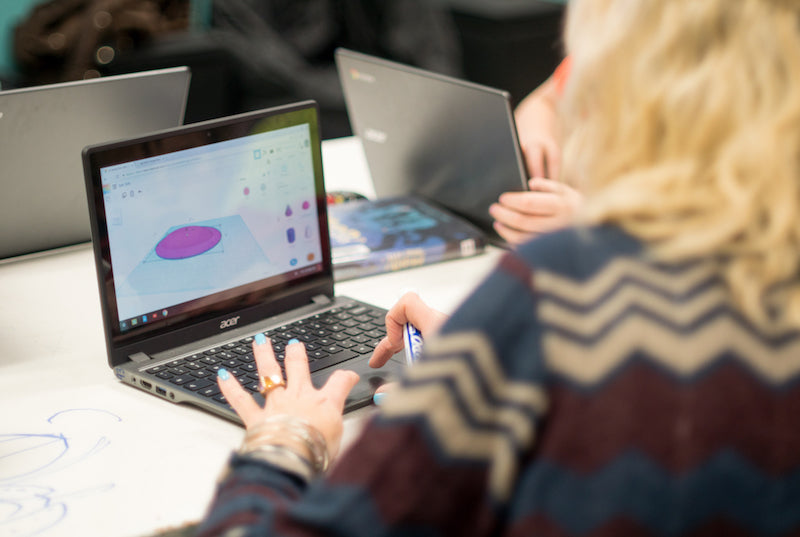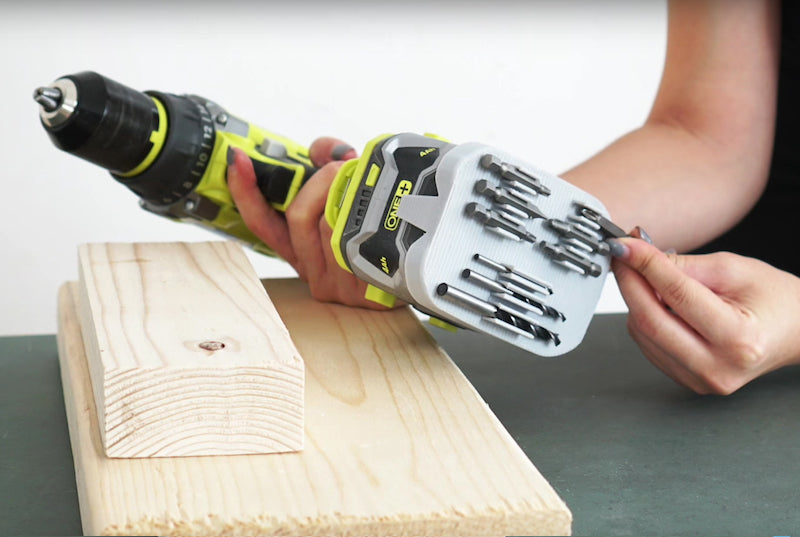Shelley Emslie is a 5th grade teacher at Swan Middle school in Bigfork, Montana and has been an educator for the past 20 years. She has become one of the biggest advocates for the use of 3D printers in the classroom. By bringing 3D thinking into lesson plans, Shelley has found it extremely beneficial to help her students learn about the design cycle. Utilizing the open source files found on the internet and the Robo 3D curriculum gave Shelley an initial platform to begin incorporating elements of 3D printing to NGSS and common core standards. Below are some experiments that Shelley was able to perform in her classroom.
Experiment 1: Design Cycle and Iterations Learned
I loved incorporating the design cycle with my students. I took them from textbook to 3D printing where the students can now use critical thinking and problem solving to work through real issues they are presented with. This will ultimately prepare them to succeed in their next stage in life beyond education.
During our Genius Hour - kids were making a Plant Vs. Zombies field and they needed a pea shooter. They did numerous iterations while learning the design process because the first print did not work and they had to obtain different models.
Experiment 2: Bringing Marine Biology to Life
So, we have been studying different underwater ecosystems and we did a Google Hangout with a researcher in Bermuda to talk about the coral reefs bleaching. We had a local artist come in and teach us how he makes 3D files with TinkerCad. Then, the students went into Tinkercad and started building their own pieces of coral. We are now printing out the students’ creations and adding it to our “Coral Wall” ecosystem in class. This truly brought science to life in a way these kids will never forget.
In this experiment, I saved a ton of time going from Robo R1+ to Robo C2/R2 because of their onboard slicing system. I no longer need to use slicing software at all. I took my kids’ Tinkercad coral reef designs and sent their STL models directly to the Robo C2 and R2. If I didn’t have this, I would have had to bring each model into a slicing software and prepare them to print one by one. It saved me over two hours of time on this experiment alone.”
Experiment 3: Designing for Optimal Use
When learning about the Scientific Method, we decided to hypothesize about the best bubble solution. We created a practical approach for my students to learn about hypothesizing and all the different parts of the Scientific Method. Then, we designed and 3D printed our own bubble wands, came up with hypothesis of what would work better, designed different iterations and used those to blow the bubble solutions that they came up with! The kids started incorporating 3D thinking into their lives because they realized they could make something better. It was remarkable to see.
What I loved is that because of the Robo R2 large build volume, I could load multiple models onto one platform and print them together. It saved me a lot of time. And I could monitor them from the on-board camera!
View Shelley’s full case study here
To learn more about the 3D printers used in Shelley’s classrooms, click here.
